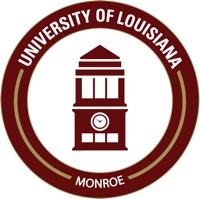Below is a summary of the abstract you submitted. Presenting author(s) is shown in bold.
If any changes need to be made, you can modify the abstract or change the authors.
You can also download a .docx version of this abstract.
If there are any problems, please email Dan at dar78@pitt.edu and he'll take care of them!
This abstract was last modified on March 16, 2021 at 10:39 a.m..

We have annotated two phages belonging to the DJ cluster of Gordonia bacteriophages that were isolated from different Gordonia host species. Schwartz33 was isolated using the Gordonia terrae host, while Nadmeg was isolated using Gordonia rubripertincta. Of the twenty-four phages currently listed in the DJ cluster, twelve have been isolated from each Gordonia host. The Nadmeg genome is 61,137 base pairs in length with a 3’ nine-base pair overhang and a GC content of 51.6%. The Schwartz33 genome is 59,457 base pairs in length with an identical 3’ nine-base pair overhang and a GC content of 67.5%. As expected, a nucleotide BLAST of the full Nadmeg genome indicated its closest matches as other members of the DJ cluster of Gordonia phages (e.g., Crocheter, Runhaar, Untouchable, Kenosha) and included phages isolated on G. terrae (e.g., Runhaar). BLASTn results of the Schwartz33 genome matched other DJ cluster members and indicated that three of the top four hits were to phages isolated on G. rubripertincta (e.g., Secretariat, OhMyWard, Nithya). Of the 88 preliminary open reading frames identified in the Nadmeg genome, 23 code for functional gene products while the remaining 65 code for hypothetical proteins of no known function. Using pBLAST and the Phamerator visualization tool, we have verified that virtually all functional gene calls (terminase, lysine A & B, holing, portal, capsid/capsid maturation protease, major & minor tail proteins, tapemeasure protein, DNA primase/polymerase) and 80% of the hypothetical proteins belong to Phams that are common to both Nadmeg and Schwartz 33. We are planning a study of previously-isolated G. terrae phages with the G. rubripertincta host to ascertain if these phages exhibit extended host range infectivity. Comparative analyses such as these not only provide insight into the relationship between Gordonia phages but also can point to extended comparisons between other Actinobacter phage group isolates.
